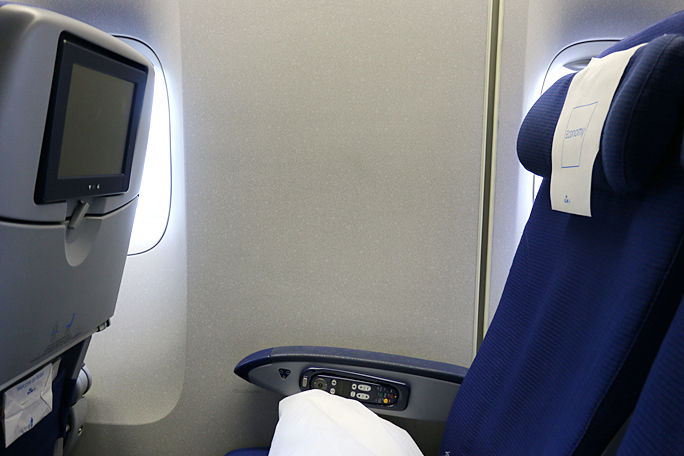Should you pay extra for a window seat with no window? Passengers who claimed they paid extra money to sit in window seats — only to find out that the seats for which they paid were located next to a blank wall and not next to windows — believe that they were mislead and have sued two carriers on Tuesday, August 19, 2025 with proposed class action lawsuits, seeking millions of dollars of damages for greater than one million passengers at each airline.
Should You Pay Extra For a Window Seat With No Window?
Some models of airplanes — including some Boeing 737, Boeing 757, and Airbus A321 aircraft — contain seats that would normally be next to windows, but because of the placement of air conditioning ducts, electrical conduits, or other components of the fuselage of the airplane, installing a window next to certain seats aboard some of these airplanes is not possible.
Moreover, these specific seats are not indicated during the process of booking a ticket with Delta Air Lines or United Airlines that no window is located next to them — even when customers pay extra money for these seats. Alaska Airlines and American Airlines are two examples of carriers which do indicate that no window is available for certain seats.
The lawsuits — which are Meyer v Delta Air Lines Inc, U.S. District Court, Eastern District of New York, No. 25-04608 and Brenman et al v United Airlines Inc, U.S. District Court, Northern District of San Francisco, No. 25-06995 — claim that people purchase window seats for reasons which include but are not limited to:
- Preventing or mitigating motion sickness
- Keeping a child occupied
- Addressing aerophobia or aviophobia — both of which are terms for the fear of flying
- Embracing extra ambient daylight
- Enjoying scenery in terms of watching the clouds or the world down below go by
One of the plaintiffs actually sat in a window seat next to a wall with no window three times and received a refund from the airline for two of those three times.
Final Boarding Call
The fact that other Internet web sites contain descriptions of each seat aboard airplanes — which include no window is next to the seat, as well as other advantages and disadvantages — does not absolve the airlines in themselves disclosing information pertaining to each seat when they charge additional money for access to them. A customer should not have to be required to spend extra time conducting research elsewhere about the details of a seat, which should only take a moment of time to read from a clear description at the official Internet web site of the airline.
Frankly, I believe that disclosing window seats with no windows may actually be a benefit to an airline in addition to retaining the trust of customers, as some passengers may actually purposely and intentionally seek seats next to a blank wall with no window, as they may not want the bright daylight next to them as they sleep against the wall with a pillow — which is arguably moderately more comfortable than trying to sleep against a window…
…but I am not one of those people. With few exceptions — this experience being one of them — I typically prefer a window seat aboard an airplane.
Photograph ©2015 by Brian Cohen.

